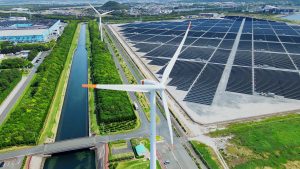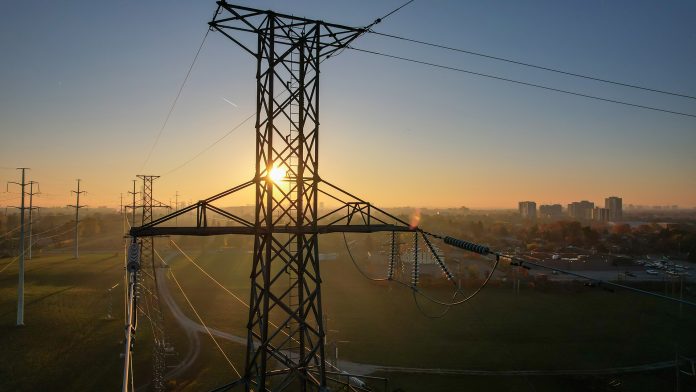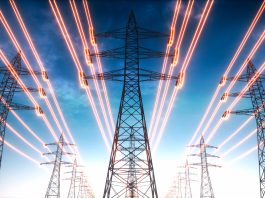In an interview with Innovation News Network, Amir Cohen, CEO at EGM, outlines the potential benefits of Dynamic Line Rating for optimising energy distribution and enhancing grid resilience in the face of climate change.
The power grids are currently grappling with significant challenges brought about by the integration of clean technologies and the impacts of climate change.
Factors such as ageing infrastructure, power reliability issues due to extreme weather events, and the unpredictability of clean energy sources like solar and wind pose substantial hurdles for electricity utilities.
In this evolving landscape, the emergence of smart grids and innovative solutions like Dynamic Line Rating (DLR) becomes crucial for efficient network management. These advancements aim to optimise energy distribution, overcome challenges posed by the increasing demand for renewable energy, and enhance the overall resilience and reliability of power grids.
This shift towards digital technologies and data-driven approaches reflects a paradigm shift in how we understand, monitor, and manage power grids in the face of evolving energy needs and climate-related uncertainties.
To find out more about the potential of Dynamic Line Rating, Jack Thomas, Managing Editor of Innovation News Network, spoke to Amir Cohen, CEO at EGM.
What are the main challenges the power grids are facing in relation to clean technologies and climate change?
Renewable energy and extreme weather pose a series of challenges to electricity utilities, such as ageing infrastructure and power reliability.
Clean electricity generation technologies mainly consist of solar and wind power. The advantage of clean energy is that it is cost-efficient in countries with abundant sunlight.
These energy sources are characterised as being unstable and cannot be placed anywhere, however. Because of this, there must be a way to use challenging sources of energy to fulfil consumption needs.
Climate change creates grid unreliability, requiring large investments in recovery capacity, resiliency, and redundancy. The UK consumes around 280 to 300 trillion kilowatt hours every year. To simplify this, this averages at about 32 million kilowatt hours per hour.
The recognised index of damage to the GDP in developed countries caused by power outages is estimated to be £24.30 per 1-kilowatt hour that is not supplied.
Using England as an example, if there were a blackout across the whole country for an hour, the damage to the GDP would be £0.8bn.
If EGM could reduce these power outages to half an hour by investing in advanced digital systems, the damage would only be 35% of this cost. This is the ratio between the damages and the investments required to deal with the problems.

What is the role of smart grids and, specifically, Dynamic Line Rating? How does it work, and what are the benefits?
Connecting renewable energies requires overcoming several challenges. For example, the balance between unstable energy sources and demand, the distance between sources and demand, and synchronising between sources and demand to maintain the correct phase timing.
There needs to be an understanding of what is happening in the grid to avoid unwanted changes in voltage.
Another challenge is managing multiple resources. The ratio between past and future resources is about one to 3,000 or even higher. This means that in the past, the UK, for example, used 100 power stations. In the near future, the UK’s electricity grid will be connected to around 300,000 different resources.
One of the main issues is maximising the utilisation of assets. The assets are huge, and each transmission line costs around £1m per mile, with each distribution line costing around 25% of that.
Establishing a new line takes at least ten years because of regulation; therefore, it is necessary to optimise the flow of electricity to maximise utilisation.
Until today, the definition of the maximum permissible load was based on the static coefficient which embodies a fairly large safety factor. The purpose of the DLR is to enable the maximisation of electricity passing through any line at any given moment, including forecasting for the next hours and day.
DLR enables power grids to know how much the power line can be loaded without shortening its lifespan. Upon implementation of Dynamic Line Rating capabilities, the electricity supply can be tailored to meet demand, utilising the infrastructure’s capacity to navigate between lines from various substations, thereby optimising the network’s overall capacity at the grid level. This enables operators to oversee the entire system and direct energy based on line capabilities while maximising usage.
In the context of the digitised power grid, a sophisticated management system enables the intelligent distribution of energy. Instead of a simple transfer from point A to point B, the system allows us to analyse the entire network at a grid level. This capability allows for strategic adjustments in energy transfer and load distribution, taking into account the varying capacities of different transmission lines.
From a broader perspective, this approach is highly promising and represents a significant advancement in the field.
What were the outcomes of the DLR pilot trial in Israel?
The pilot trial in Israel focused on a 161-kilovolt transmission line, undertaken to explore the potential benefits of utilising a DLR system. We installed our system in November 2022, and almost immediately, Noga, the transmission utilities in Israel, recognised an 18% increase in the safety coefficient.
Our system provides utilities with precise information about their maximum capacity, allowing them to operate on the edge with confidence. This resulted in an additional 18% capacity for the line.
This insight from the Israeli pilot demonstrates the practical benefits of our system.
This type of system will significantly assist utilities in optimising utilisation during urgent situations and provide comprehensive information about the status of power lines.

What are the other European locations where you are planning to conduct DLR pilots?
Several utilities in central and western Europe, along with the Quebec province in Canada, have joined forces to conduct DLR pilots.
It’s a significant project involving five European countries, and the collaboration is underway.
Considering the avoidance of unnecessary grid expansions, what potential cost savings could be realised?
The electricity generation landscape operates daily, with tenders and production planning handled by ISOs (Independent System Operators) or sometimes Regional Transmission Organisations (RTOs).
The current system may limit the ISO’s ability to purchase cheap electricity efficiently. For instance, a wind source in Scotland could supply London, but due to transmission constraints, only 70% can be purchased. The remaining power is sourced from a nearby natural gas station, which is more expensive and polluting.
With our system providing accurate forecasts, the ISO can optimise its purchases, favouring cost-effective wind energy from Scotland over closer natural gas sources. This is just one example of improved source selection and better pricing.
Additionally, challenges that were traditionally associated only with transmission lines now affect distribution lines. Factors like the increasing load from electric vehicles and home appliances strain grids designed decades ago.
The main advantages of DLR include enhancing electricity procurement by ISOs, deferring or maximising the utilisation of infrastructure, and facilitating better planning for distribution lines.
The overall goal is to optimise electricity procurement by ISOs and improve infrastructure utilisation for both transmission and distribution.
Why does managing a power grid require new and innovative methods?
With the advent of digital technologies, it has become evident that managing power grids cannot rely solely on deterministic and intuitive methods as it has in the past. The complexity of the network, connecting numerous consumers and suppliers engaged in various forms of energy trading, requires a shift towards scientific-based tools. It’s not sufficient to assess the situation; continuous monitoring of the network is essential to truly understand its dynamics.
Recognising this, we concluded that the foundation of a smart grid should be an operational and management tool centred around advanced analytics, leveraging data from the field. This led us to develop a system that integrates analytics based on a multitude of algorithms, AI with self-learning capabilities, and hardware capable of providing a real-time depiction of field conditions with minimal sensors.
This approach enables optimal network management by offering accurate insights into the dynamic nature of the power grid.









